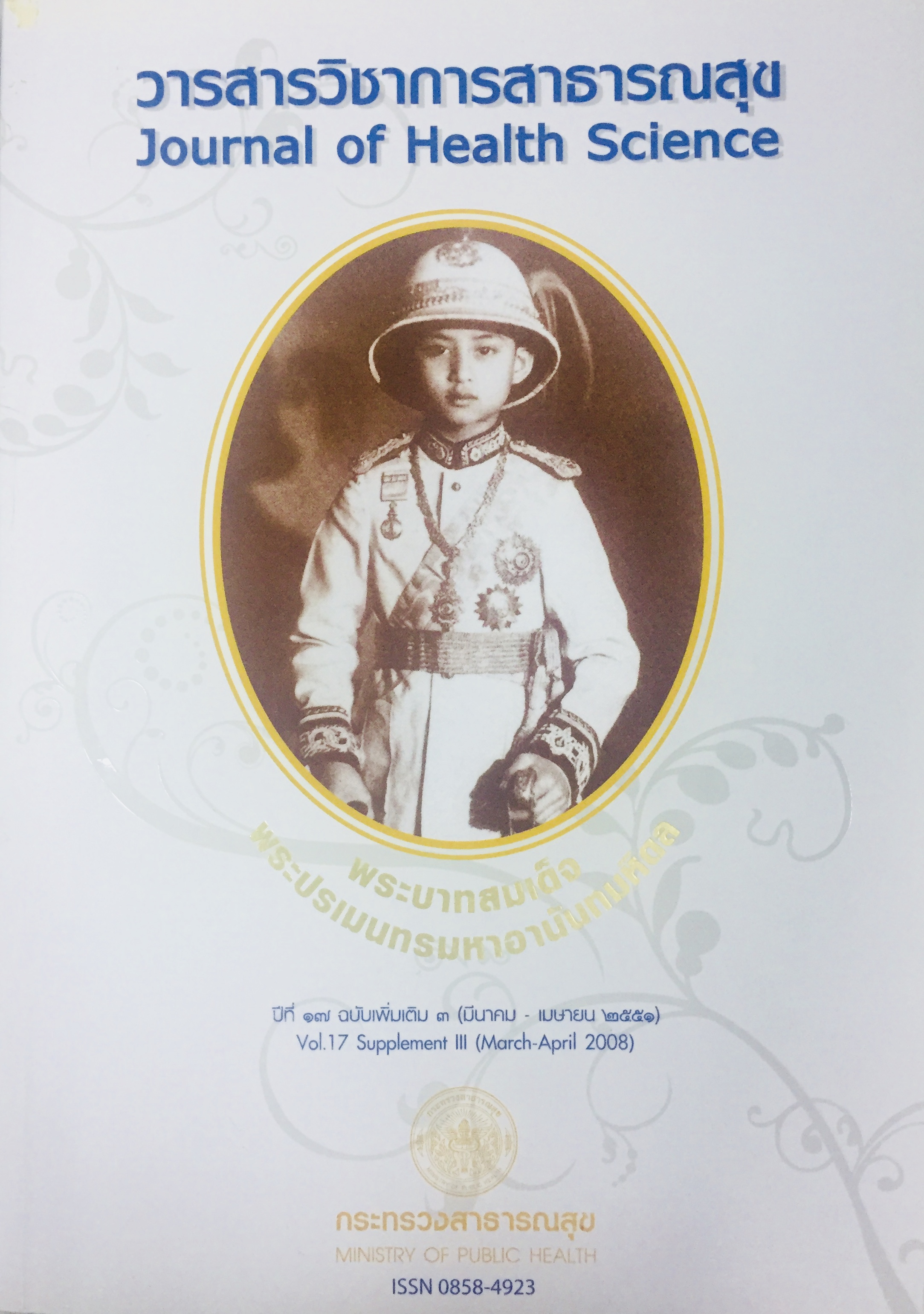Ventilator - Associated Pneumonia in Premature Infants in a Neonatal Intensive Care Unit at Chaoprayayommaraj Hospital : The Rates, Risk Factors and Outcomes
Keywords:
VAP-ventilator-associated pneumonia, NICU-neonatal intensive care unit, prematurity, very low birth weightAbstract
This retrospective descriptive and analytic study was to determine the rates, risk factors and outcomes of ventilator-associated pneumonia (VAP) in premature infants with a gestational age ฃ 36 weeks and with a birth weight ฃ 2,000 grams, admitted to the neonatal intensive care unit (NICU) for ณ 48 hrs. from October 2004 - September 2007. The infants were also required to have received at least 48 hrs. of mechanical ventilation and developed new and persistent radiographic evidence of focal infiltrates 48 hrs. or more after the initiation of mechanical ventilation. The primary outcome was the development of VAP. The secondary outcome were death and NICU length of stay. Multivariate logistic regression analysis was performed to determine independent predictors for VAP and mortality. A total of 105 premature infants were enrolled. VAP occurred in 31 (29.5%) of 105 premature infants mechanically ventilated patients. VAP rates were 8.6, 9 and 3 per 1000 ventilator days for infants ฃ 1,000 grams, 1,001-1,500 grams, and 1,501 to 2,000 grams, respectively. By multivariate logistic regression analysis, the number of re-intubation before VAP was the only independent risk factor for VAP. The infants who need 1-2 subsequent reintubation (OR 15.3, 95%CI 5.0, 46.4) and > 2 subsequent reintubation (OR 71.2, 95%CI 7.5, 679.9) have increased risk more than infants who had no subsequent reintubation. The infants with VAP also had prolonged NICU length of stay (median:44 vs 14 days). VAP occurred in 7 of 8 nonsurvived infants (87.5%). By multivariate logistic regression analysis, VAP (OR 22.4, 95%CI 2.3, 216.7) and bloodstream infection (OR 7.0, 95%CI 1.2, 43.3) were independent risk factors of mortality.
The incidence of VAP increased in preterms with very low birth weight and low gestational age and was associated with increased mortality. Infants with VAP had significantly prolonged NICU length of stay and increased medical costs. So education and preventive strategy of VAP and effective systematic surveillance programs are necessary to prevent nosocomial infection and may reduce the VAP rates and risk factors of VAP and mortality in premature infants.
Downloads
Downloads
Published
How to Cite
Issue
Section
License
Copyright (c) 2018 Journal of Health Science

This work is licensed under a Creative Commons Attribution-NonCommercial-NoDerivatives 4.0 International License.







